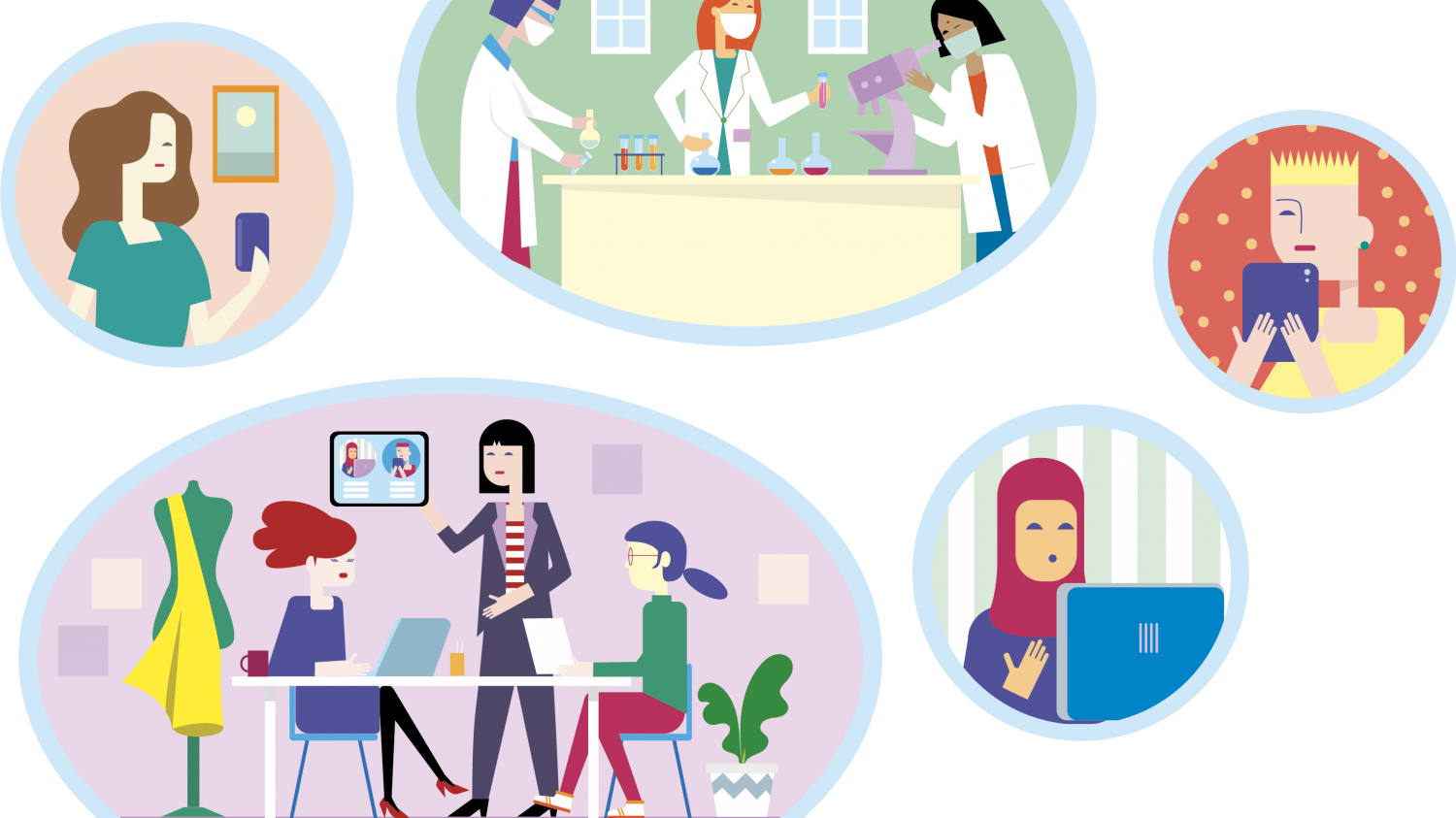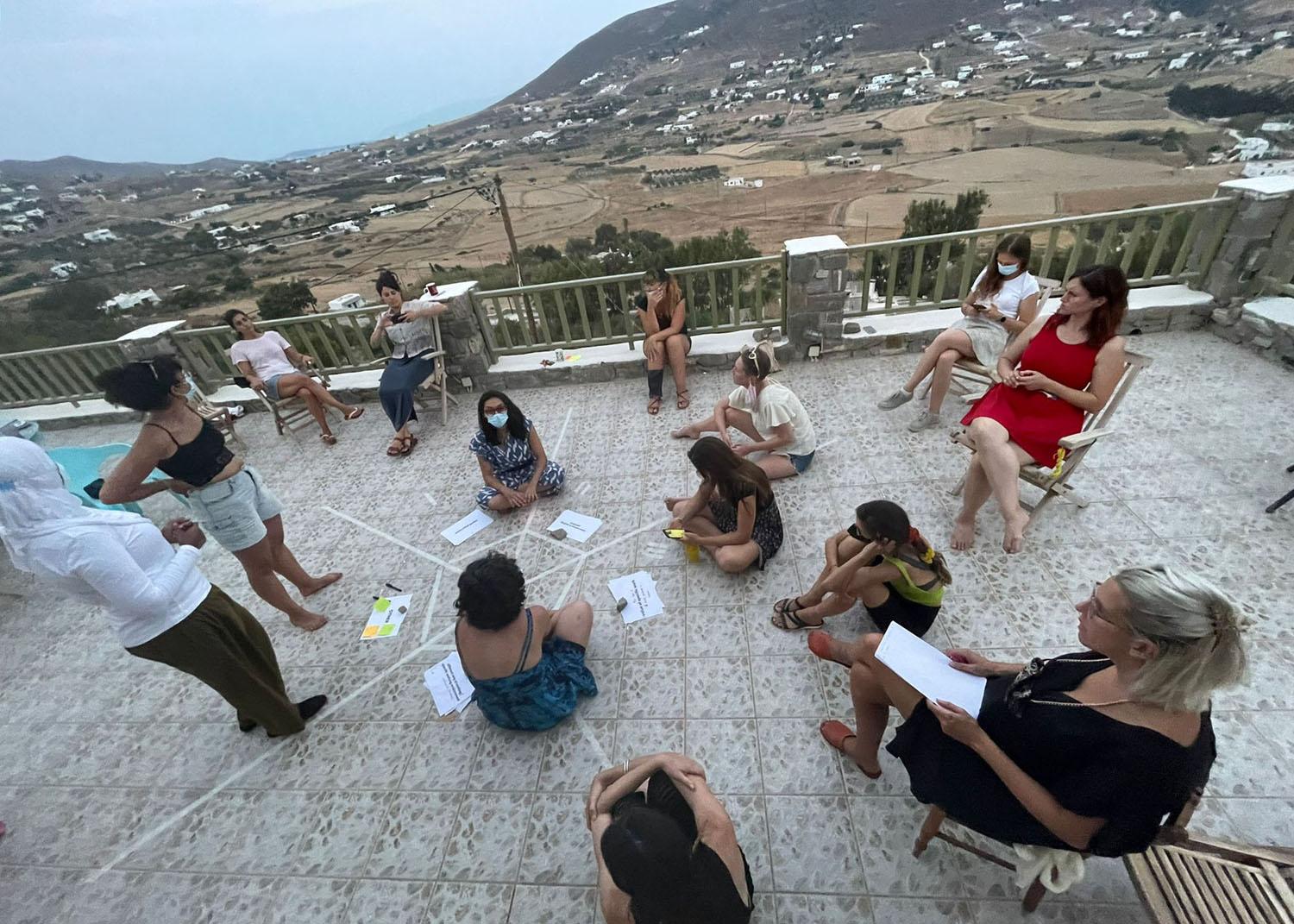How to hold a gender vision workshop and encourage equality amongst peers


For shemakes, I’ve been in charge of creating what is called a “gender vision,” a series of values and relative statements about gender and equality that is grounded in our collective experience of learning, working and being as women (and men). In this article, I want to tell you a bit about how we came up with the shemakes gender vision and how you might be able to apply this in your own workplace or within your own peer group. We’ll also provide some guidelines for how to hold a gender vision workshop of your own to increase awareness of the themes that enable an equality-based or female-friendly workplace in the textile and clothing industry.
How we developed a gender vision as a group
There are plenty of theories of gender development in the social sciences and we could have started with a big academic-style literature review and mashed together a few different theories to find our own place there. But we preferred to do something more inclusive: co-create the shemakes vision with the project’s partners in a way that supports the formation of shemakes as a temporary organisation and its ability to articulate its vision of change both internally and externally.
We began, thus, with a series of online workshops where we posed what we call “provocations”, looking at why men and women are different (biological explanations) or are learning different gender behaviours from early childhood (social learning explanations), the role of power (e.g. patriarchy) as well as newer ideas such as intersectionality (different oppressions linked to our identities can overlap) and the idea that because of our identities we can gain certain privileges in the societies we live in.
Amongst the reflections that came out of these workshops, many shemakes colleagues argued how important role models are for girls and they noticed how girls behave differently in workshops using technology when boys are present making them less likely to experiment in that context.
Conversely, aspects of the vision for shemakes came out in phrases like wanting to reverse gender roles, the desire to create safe spaces for women and girls to collaborate in – creating opportunities for shemakes participants to observe and experience new or different gender behaviours. And in the desire to “revitalise, reframe and reposition both textiles and women’s roles within it” – speaking to the idea of creating new symbolic models for women working or learning in the field of textiles and clothing.
What the vision looks like
Fundamentally, the shemakes gender vision imagines a gender-equal work system where girls and women are able to take up different tasks and roles because they are supported by a social system (a way of working, perhaps) that is in sync with this. There are five values or pillars in this vision:
- Equal
- Collaborative
- Welcoming difference
- Empowering
- Inspiring
Shemakes labs try to be all these things, and encourage other labs, companies, educational contexts etc. to be so as well. We’ve created a poster that you can print and hang in your space, perhaps accompanied with additional communication amongst your peers to start addressing gender issues and creating this supportive space.
How to hold your own gender vision workshop
We have developed a series of gender vision workshops that we’ve tested in a few locations, both online and off - together as the consortium and, in a variant, with an international group in Parros and in a community group in Romania, amongst others. These are our top tips and key learnings for developing your own gender vision:
- Be clear about why you want to develop a gender vision (the purpose), and who this is for (the audience). In shemakes we wanted to create an opportunity for different thoughts about a more gender equal textile and clothing system among project partners to emerge in order to then co-create a common vision that can be used for project implementation internally and with our wider stakeholder network.
- You might find it helpful to create a short logic model to help you think through the details of creating your gender vision: why you’re developing it, the resources you’ll need, what you will produce from them that will ultimately create the vision. This will help with planning and being clear about what you’re trying to achieve.
- Plan at least half a day for your workshop, more if you would like to explore particular issues in greater depth.
- Make sure the right people join your gender vision workshop. This should be people who will work towards realising the vision.
- Create a workshop process that takes your participants on a journey towards your gender vision. In shemakes, we started by sharing personal experiences with gender issues in textiles and clothing, then talked about how in shemakes we’re currently dealing with gender questions to then discuss the vision for a more gender equal T+C system we’re working towards.
- There’s no right or wrong output - work up the results from your discussions into an output that meets your needs. this could be an image, a series of words, manifesto, diagram.
Following the workshop it’s useful to think about how you can practically use the vision to guide your work. This might involve holding reflective meetings to review your practice in light of the vision or incorporating aspects of the vision into processes or tools you use.
Variants on the gender vision workshop
Within our activities designed to engage different communities, partner REDU has developed a stakeholder workshop that embeds a gender vision element. Titled "Closing the Gender Gap - Creating a Community", the activity sought to contextualise, involve and empower a number of key stakeholders from different fields using the quadruple Helix model - academia, business, public administration and civil society so that they might join us in our efforts to close the gender gap and to define a plan in order to develop/ or improve (if already existing) a Gender Equality plan that we can start working towards it in the next period, each in our own working environments. You can find the full documentation of the Closing the Gender Gap workshop on the shemakes Open Toolkit.
Partner Waag has integrated their four-quadrant method to create a “star exercise” which is a nice way to get people physically involved in the discussion of difficult gender questions when holding in-person events. Organizers create a star shape on the ground to make five spaces. Then, five controversial questions are posed and answers are placed in each of the five spaces. Participants try to position themselves in the space with the answer that most reflects them, with the possibility of putting legs into more than one space - something like the classic game of “Twister” while interesting discussions arise. You can find further documentation on this method in the shemakes Open Toolkit.


